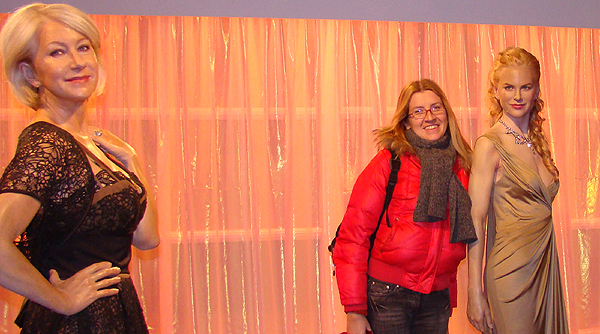I have already talked about Madame Tussauds in the article dedicated to the Marylebone district (which I invite you to read for more information), but I thought that this very famous wax museum deserved another article entirely focused on it, given the crucial role it plays in the final book of the Detective Eric Shaw Trilogy, “Beyond the Limit”.
It is part of a chain of wax museums, present in
twelve different cities around the world, but the first was precisely that of
London, founded by the sculptor Marie Tussaud in 1835, the year in which
she held the first exhibition of her collection. Currently, the Madame Tussauds
museum chain belongs to the English company Merlin Entertainment, which
among other things also owns Gardaland in Italy.
I had the pleasure of visiting the museum twice at a great distance in time: once in 1990 and once in 2011. Some parts of the exhibition have not actually changed that much, especially those relating to the reconstructions of scenes from the past, while the waxworks of contemporary celebrities always tend to reflect the fashions of the times and, perhaps, the ageing of public figures they represent. Among the historical waxworks in particular, I cannot fail to mention “Sleeping Beauty”, which seems to be the oldest still on display. It is the work of Tussaud’s teacher, Doctor Curtius, and is dated 1765. This is characterised by a movement of the chest which simulates breathing, just as if she were sleeping, and represents Madame Du Barry.
The exhibition consists of a more or less obligatory path in which different settings are encountered. A particular room is the so-called party room, in which the waxworks are scattered in a large space and would almost blend in with the visitors if they were also wearing evening clothes.
Some are isolated, but others are connected to furnishing elements. There is, for example, George Clooney sitting at a table and visitors can sit next to or in front of him. And place their hand on his. Another particular waxwork is that of Julia Roberts, who is standing behind a chair often placed in front of a table (the arrangements change according to needs), with her hands resting on the backrest. In a sense, the chair is part of the waxwork, for without it poor Julia would fall forward. And on this chair you can sit to take a photo with her.
And precisely, the waxwork of Julia Roberts is
the protagonist of some scenes of “Beyond the Limit”. I won’t tell you how, but I’ll leave you the pleasure of discovering
it for yourself while reading the book.
While imagining these scenes, I obviously had to take
some licence since the arrangement of the waxworks in the museum is changed
periodically, and I certainly couldn’t know what it would be on 21 May 2017,
the day in which the scenes in question are set, given that I wrote them in
November 2016.
The ticket to visit Madame Tussauds in London is quite
expensive (at the time of writing, the basic one is 47 GBP), but you can save some money by booking it online. Furthermore, it’s possible to combine it with other tourist
attractions, such as the London Eye (which I will talk about in another
article), paying a much lower amount than the sum of the two separate tickets.
Inside Madame Tussauds, there is also a sort of 4D cinema (3D plus motion simulation), whose short shows are included in the price.
However, the funniest part of the visit is taking
photos with your idols, even cheek to cheek, and discovering that some
of them are shorter than you thought, or taller.






No comments:
Post a Comment